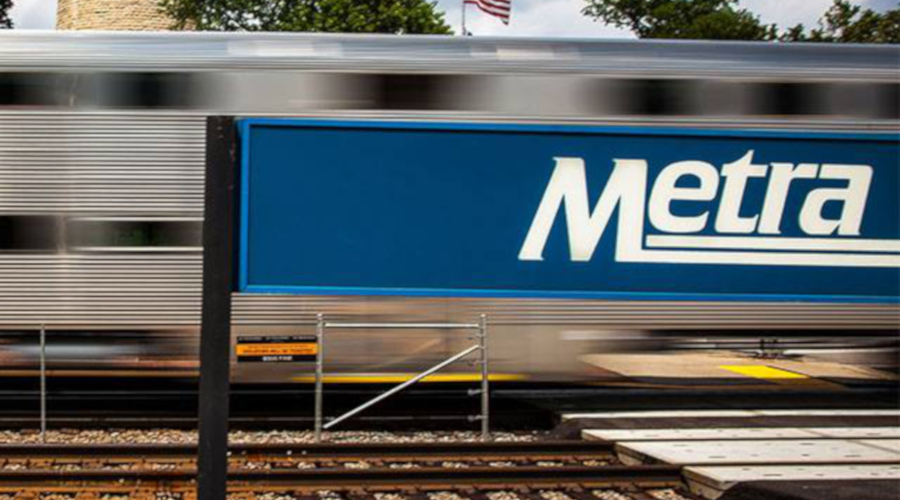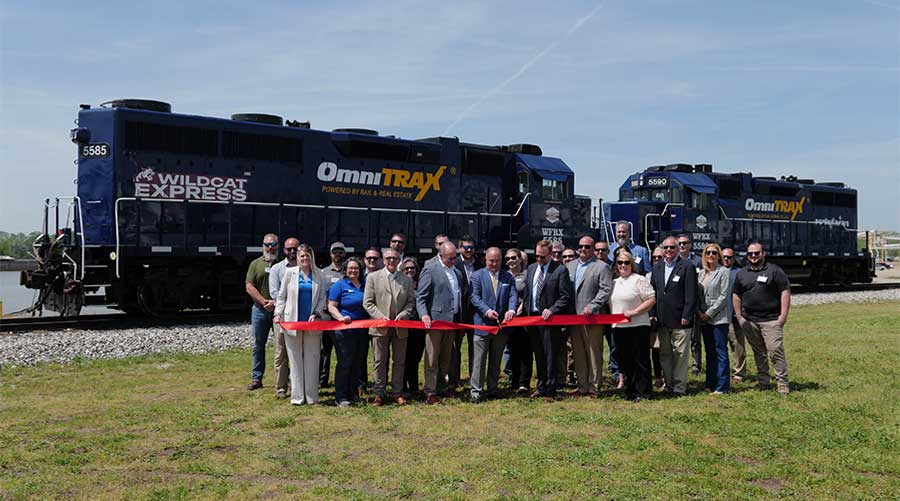Newsletter Sign Up
Stay updated on news, articles and information for the rail industry
Stay updated on news, articles and information for the rail industry
RAIL EMPLOYMENT & NOTICES
Rail News Home
Rail Industry Trends
Rail News: Rail Industry Trends
4/17/2008
Rail News: Rail Industry Trends
USDOT unveils new rail haz-mat routing rule
advertisement
The onus soon will be on railroads to ensure they're routing every hazardous material-carrying train on the safest and most secure route. A new federal interim final rule on rail haz-mat routing goes into effect June 1.
Introduced yesterday by the U.S. Department of Transportation (USDOT), the rule requires railroads to conduct a comprehensive safety and security risk analysis of a haz-mat shipment's primary route and any practicable alternative routes. The analysis must consider information provided by local communities and a minimum of 27 risk factors, such as trip length, volume, haz-mat type, existing safety measures along the route and population density.
Railroads must begin compiling information concerning the commodities they transport and routes utilized beginning July 1. They then have nine months — from January to September 2009 — to perform initial risk and route assessments. Railroads must implement their routing decisions based on the analyses by September 2009.
Developed by the USDOT's Pipeline and Hazardous Materials Safety Administration in consultation with the Federal Railroad Administration, the rule applies to railroads that move Poison Inhalation Hazard materials, such as chlorine and anhydrous ammonia; more than 5,000 pounds of certain explosives in a single carload; and certain high-level radioactive materials.
"This strong measure better ensures that rail shipments of hazardous materials will reach their final destinations safely and without incident," said U.S. Transportation Secretary Mary Peters in a prepared statement.
The rule also includes several rail security provisions designed to guard against tampering with a rail haz-mat car during transportation. In addition, the rule complies with the provisions of the Implementing Recommendations of the 9/11 Commission Act of 2007 and complements the USDOT's recent proposal to increase by 500 percent the amount of energy a tank car must absorb during a train accident before puncturing, such as through innovative designs, materials and technologies, said Peters.
The Association of American Railroads (AAR) welcomed the new rules, which address railroads’ highest priority: the safety and security of the communities they serve, the AAR said.
“But this does bring up a bigger issue, and that is the use of safer chemicals and technology,” said AAR President and Chief Executive Officer Edward Hamberger. “The only way you can eliminate all of the risk of transporting toxic chemicals is if you don't move them at all.”
The Center for American Progress last year pointed out that at least 25 cities have stopped using chlorine to purify drinking water or treat wastewater in recent years, including Washington, D.C., he said.
“Similarly, there are other fertilizers that can substitute for anhydrous ammonia. Between them, chlorine and anhydrous ammonia account for more than 80 percent of all toxic chemicals moving by rail,” said Hamberger. “Railroads are caught in the middle in all of this since we are required under federal law to move even the most dangerous chemicals.”
Introduced yesterday by the U.S. Department of Transportation (USDOT), the rule requires railroads to conduct a comprehensive safety and security risk analysis of a haz-mat shipment's primary route and any practicable alternative routes. The analysis must consider information provided by local communities and a minimum of 27 risk factors, such as trip length, volume, haz-mat type, existing safety measures along the route and population density.
Railroads must begin compiling information concerning the commodities they transport and routes utilized beginning July 1. They then have nine months — from January to September 2009 — to perform initial risk and route assessments. Railroads must implement their routing decisions based on the analyses by September 2009.
Developed by the USDOT's Pipeline and Hazardous Materials Safety Administration in consultation with the Federal Railroad Administration, the rule applies to railroads that move Poison Inhalation Hazard materials, such as chlorine and anhydrous ammonia; more than 5,000 pounds of certain explosives in a single carload; and certain high-level radioactive materials.
"This strong measure better ensures that rail shipments of hazardous materials will reach their final destinations safely and without incident," said U.S. Transportation Secretary Mary Peters in a prepared statement.
The rule also includes several rail security provisions designed to guard against tampering with a rail haz-mat car during transportation. In addition, the rule complies with the provisions of the Implementing Recommendations of the 9/11 Commission Act of 2007 and complements the USDOT's recent proposal to increase by 500 percent the amount of energy a tank car must absorb during a train accident before puncturing, such as through innovative designs, materials and technologies, said Peters.
The Association of American Railroads (AAR) welcomed the new rules, which address railroads’ highest priority: the safety and security of the communities they serve, the AAR said.
“But this does bring up a bigger issue, and that is the use of safer chemicals and technology,” said AAR President and Chief Executive Officer Edward Hamberger. “The only way you can eliminate all of the risk of transporting toxic chemicals is if you don't move them at all.”
The Center for American Progress last year pointed out that at least 25 cities have stopped using chlorine to purify drinking water or treat wastewater in recent years, including Washington, D.C., he said.
“Similarly, there are other fertilizers that can substitute for anhydrous ammonia. Between them, chlorine and anhydrous ammonia account for more than 80 percent of all toxic chemicals moving by rail,” said Hamberger. “Railroads are caught in the middle in all of this since we are required under federal law to move even the most dangerous chemicals.”


 2025 MOW Spending Report: Passenger-rail programs
2025 MOW Spending Report: Passenger-rail programs
 Gardner steps down as Amtrak CEO
Gardner steps down as Amtrak CEO
 Guest comment: Oliver Wyman’s David Hunt
Guest comment: Oliver Wyman’s David Hunt
 Women of Influence in Rail eBook
Women of Influence in Rail eBook
 railPrime
railPrime








